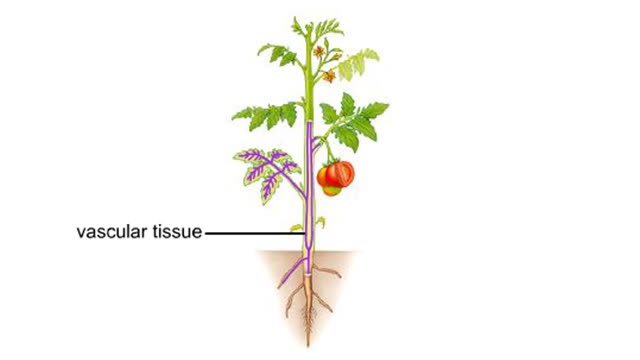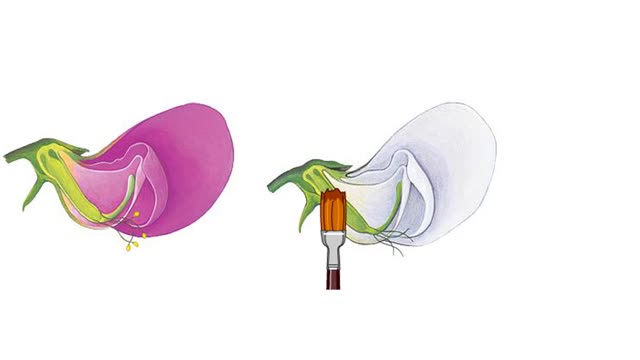What are the Parts of a Plant Cell?
By: HWC
Date Uploaded: 10/27/2020
Tags: Plant Cell Animation plastoquinone cytochrome redox reactions plastocyanin chlorophyll photosystem I. ferrodoxin stroma photosynthesis thylakoid interior ATP synthase antenna complex
Every chloroplast in a plant cell is packed with stacks of flattened sacs called thylakoids. The thylakoid membranes contain chlorophyll, as well as most of the other components required for the light reactions of photosynthesis. The chlorophyll-containing structures within the membranes are called photosystems I and II. In addition to chlorophyll molecules and other pigments, these complexes contain proteins. The photosystems function to absorb light energy and donate excited electrons to carriers in an electron transport chain. In an electron transport chain, electrons are passed from one electron carrier to another in a series of redox reactions. In the thylakoid membrane, the chain consists of carriers called plastoquinone (PQ), cytochrome (Cyt), plastocyanin (PC), ferrodoxin (Fd), and NADP reductase. In addition to the electron transport chain, thylakoid membranes contain a type of protein complex called ATP synthase. ATP synthase uses the high concentration of IV ions inside the thylakoid as a source of energy. The synthase taps this energy to create ATP molecules, which fuel later stages of photosynthesis. When a photon strikes a photosystem, its energy is captured by one of many pigment molecules in the photosystem's large antenna complex. After absorbing the energy, the pigment molecule passes the energy to other pigments until the energy reaches a chlorophyll molecule in the antenna's reaction center. After absorbing energy, the chlorophyll molecule boosts one of its electrons to a higher energy level. The electron is held very loosely and easily jumps from the chlorophyll to an electron acceptor molecule. After losing an electron, the chlorophyll molecule is considered oxidized and carries a positive charge. Electrons lost from chlorophyll molecules must be replenished. Water replenishes these electrons—two electrons for every two photons absorbed by chlorophyll. As water donates electrons, it dissociates into two H+ ions and half an oxygen gas molecule. 02 later enters the atmosphere. Meanwhile, the electrons continue along the electron transport chain. As these excited electrons reduce plastoquinone, energy is released and used to move H+ ions across the membrane into the thylakoid interior. As H+ ions build up inside, they become a source of energy that is later used to make ATP. Electrons move from plastoquinone (which becomes oxidized) to cytochrome (which becomes reduced). The redox reactions continue as cytochrome passes electrons to plastocyanin. From plastocyanin, the electrons will replenish electrons that are lost from a chlorophyll molecule in photosystem I. When photons strike photosystem I, the light energy is absorbed and transferred to a chlorophyll molecule in the reaction center. With each photon, the chlorophyll molecule donates an excited electron to an electron acceptor. Electrons from plastocyanin replenish the electrons lost from the chlorophyll molecule. Excited electrons from photosystem I are used to reduce ferrodoxin. NADP reductase then uses two electrons from ferrodoxin and two protons from the stroma to reduce NADI+, producing NADPH and H. NADPH is later used to fuel the energy-consuming sugar-production stage of photosynthesis. During these light reactions, H+ ions accumulate in the thylakoid interior. These ions will have a tendency to move to regions of lower H+ concentration outside the thylakoid, moving by means of a pore in ATP synthase. This movement powers the production of ATP, which fuels later stages of photosynthesis.
Add To
You must login to add videos to your playlists.
Advertisement












Comments
0 Comments total
Sign In to post comments.
No comments have been posted for this video yet.